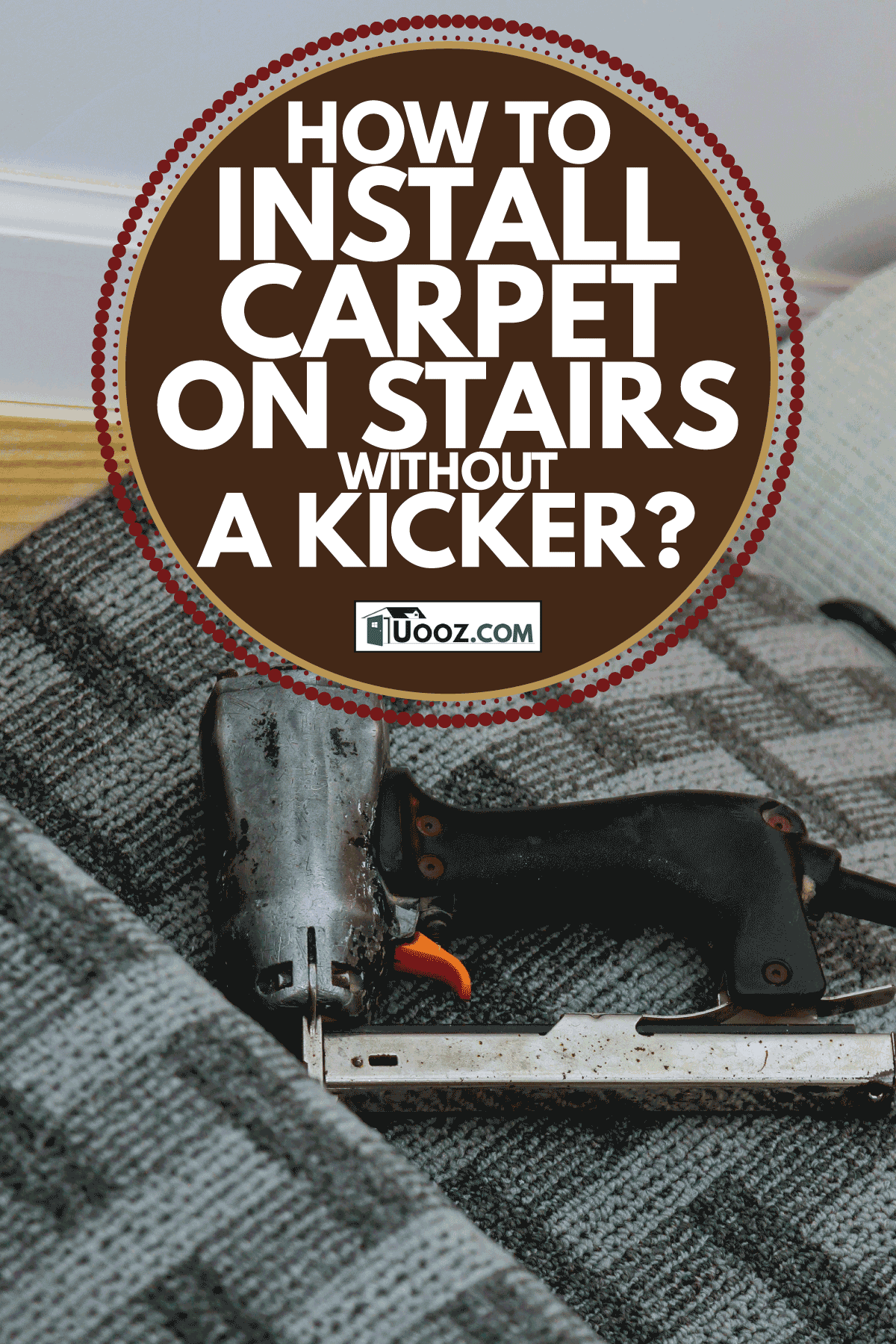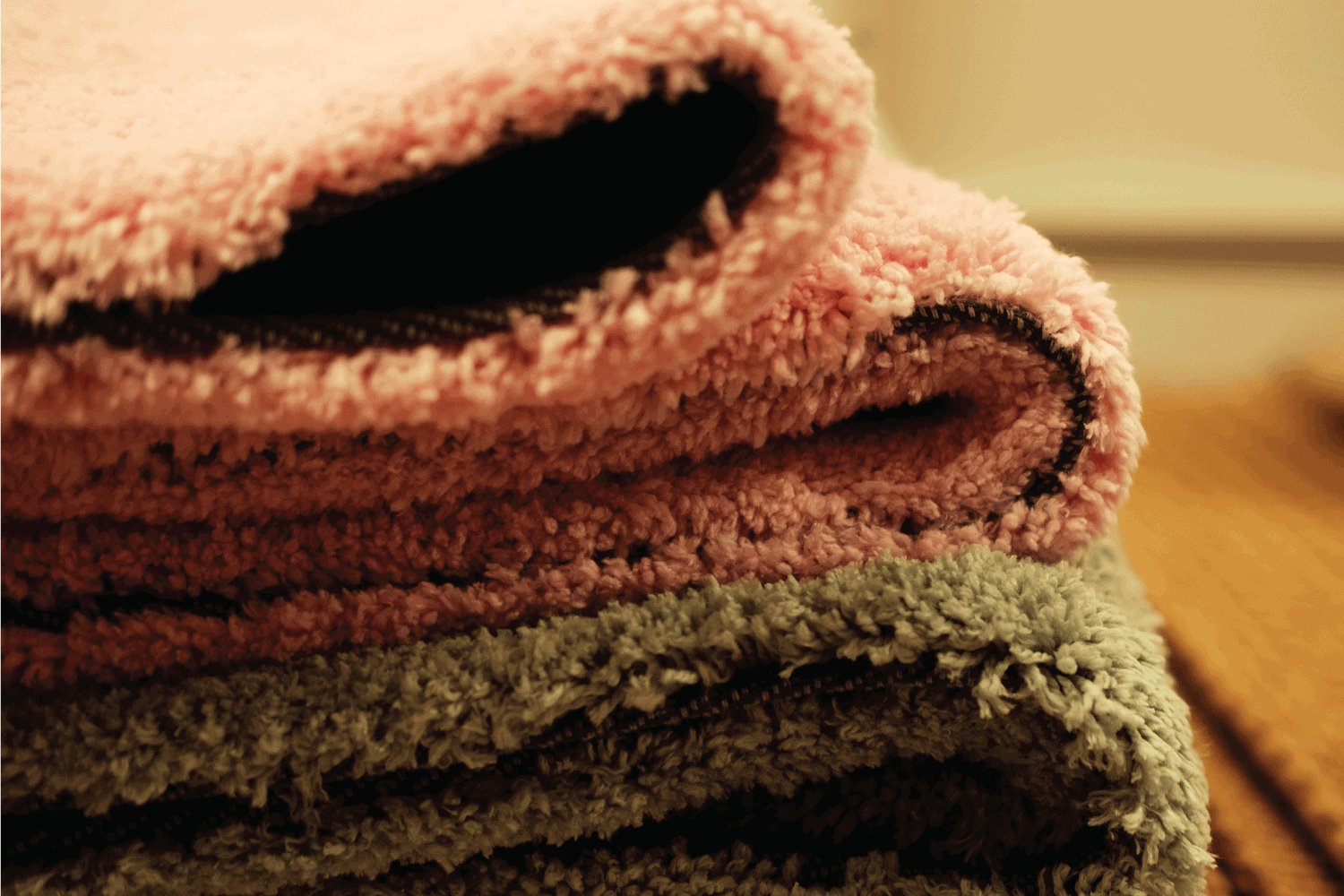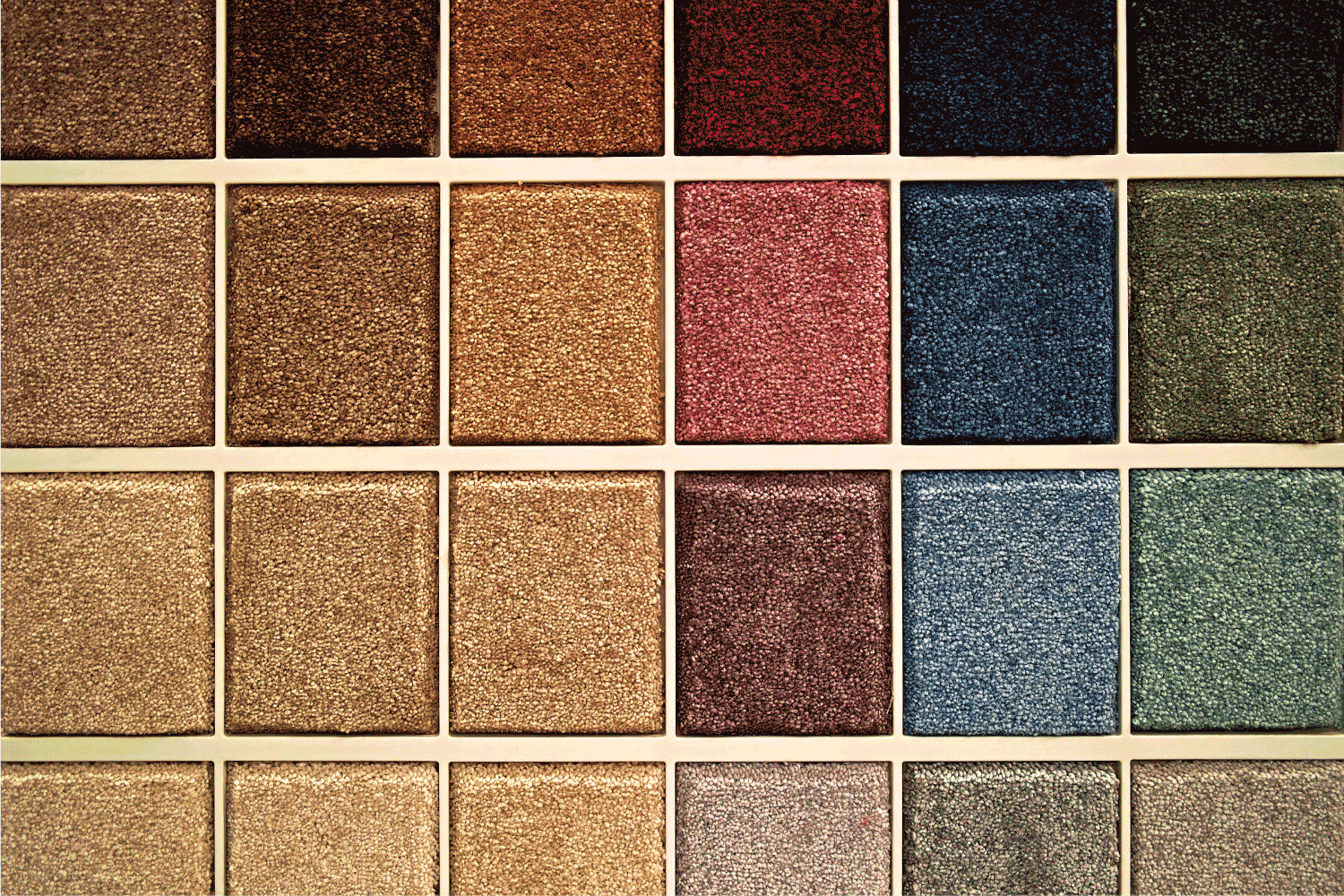If you have hardwood floors, installing carpets on your stairs can help to make them more comfortable, aesthetically pleasing, and safer. But can you install carpet on your stairs without a knee kicker? We've researched the answer to this question for you, and in this post, we will answer it in detail.
While knee kickers are generally recommended for stairwell carpet installation, you can install it without one. Here are the steps to do it:
- Clean the stairs
- Measure and install the tack strips
- Install carpet padding
- Lay the carpeting
- Secure the carpeting
Yes, installing carpet on your steps can be challenging and a bit time-consuming, especially if it's your first time performing this type of project. However, you'll be happy to know that you can do this easily and efficiently without a knee kicker. Continue reading to learn more about how.

Steps To Install Carpet On Stairs Without A Kicker

Before attempting to install the carpet on your stairs, make sure that the carpet has been measured properly, which will prevent you from running into issues during the process. It's also helpful to have a pair of electrical shears on hand if you need to trim off any carpeting to make minor adjustments.
Things you'll need:
- Utility knife
- Chisel
- Carpet padding
- Utility gloves
- Carpeting
- Tack strips
- A staple gun
1. Clean the stairs
Be sure that the stairwell is clean and free of dirt and debris so that you can quickly get to work with the installation. This also means removing any personal items from the stairs, such as children's toys and shoes. Go over the steps with a broom and mop to remove any loose dirt or debris that may be in the corners of the steps.
Check out this broom on Amazon.
2. Measure and install the tack strips
Take your tack strips and use an electrical saw to cut them to size to fit on the steps. The strips will need to be placed on the edges of the stair treads and the stair risers' front. The tacks will help grip the back of the carpet so it remains in place during usage. Generally, you'll need to use about two tack strips for each step, one for the back of the stair's tread and another for the front sides of the riser. Use a hammer to nail the tack strips in place, and be sure that the points on the top of the strips are angled to face one another.
Check out these tack strips on Amazon.
3. Install carpet padding
After your tack strips have been installed, take your carpet padding out of the packets. Use a utility knife to cut each pad into rectangles so that they're the same width as your tack strips and about three to four inches longer than the stair tread depth. Keep in mind that the padding shouldn't cover the tack strips at all, or it might affect their ability to keep the carpet in place.
Starting at the top of the steps, take one carpet pad and place it on the top of the tread in front of the tack strip. Next, use a hammer or staple gun to secure the pad in place. Be sure to place the nails or staples every three inches across the width of the step. If there is any material hanging off the edge of the padding, use your utility knife to trim it off.
Be sure to pull the padding tight as you staple it to ensure that it doesn't bunch up during the process. Repeat this process for the rest of the stairs.
4. Lay the carpeting
Now that the pads are in place, it's time to install the carpet. Starting at the top of the stairs, take the carpet and unroll it so that it falls down the length of the staircase. Next, while holding on to the stair railing, carefully place a foot down on the first step and kick in the carpet so that it touches the front of the stair riser. This process will help shape the carpet to secure it in place during the next step easily. Don't worry about the carpet catching on the tack strips come as you can re-adjust this.
5. Secure the carpeting
Next, kneel and grab the edge of the carpet and press it down on the top of the stair tread. This will help to secure the carpet over the tack strips. Be sure that the carpet is as close to the riser, and use your chisel if you need to create a crease between the riser and the following stair's tread.
Next, grab your hammer and nails or your staple gun and secure the carpet in place. Be sure to place the nails or staples at least three inches apart. Then, use your foot to kick the carpet so that it touches the stair riser, and then follow the same steps to secure it in place. Be sure to pull the carpet when stapling or nailing down the nose of the stair tread. This will prevent the carpet from slipping.
Find out more about this chisel on Amazon.
Do you need carpet padding on stairs?
While you don't necessarily need carpet padding on steps, it's usually recommended. Most stairs are hardwood or metal, and carpet padding helps add a pillowy layer of fabric to the steps to make them more comfortable to walk on. Carpet padding can also be used as a great barrier to prevent the carpeting from slipping and sliding. Lastly, carpet padding can help to protect the bare steps from stains, dents, and other damage that may come from everyday wear and tear.
Have a look at this carpet padding set on Amazon.
What is the best carpet padding for stairs?
There are a few different padding materials used for carpets today. Let's take a look at the most popular ones.
Foam Padding
One of the most common types of carpet padding is frothed foam padding. This foam is fairly inexpensive and is made to last for several years. The foam is made from urethane and is one of the most resilient carpet padding options on the market. You can use this foam for both thin or thick carpet tiles, and it can easily be cut to fit any shape.
Rebond Padding
Re-bond padding is probably the most popular type of carpet padding on the market. This is largely because it's also one of the cheapest pairing options available. It's made from recycled foam, which gives it a multi-colored appearance. It's also a high-density product that can make rooms and staircases more comfortable to walk on. If you have rooms with a substantial amount of foot traffic, this is definitely a padding material to consider.
Fiber Padding
Fiber padding is another great option to consider. This synthetic material consists of synthetic fiber and is ideal for various types of carpeting applications. It's commonly used in both home and industrial settings, and it's fairly inexpensive. It's not as soft as foam padding, but it's not one of the most expensive items either.
Can I glue carpet to stairs?

Yes, you can glue carpet to steps. To do so, you can use the same waterfall method mentioned at the beginning of this post. However, applying carpet to staircases using glue typically isn't recommended. The reason is that the glue can make it extremely difficult to remove the carpet once it's time to update the carpet or remodel the staircase. Nails or staples are more commonly used on staircases, as they can be removed easily and with less physical exertion.
Take a look at this staple gun on Amazon.
What is the best carpet for stairs?
When deciding on the best carpet for stairs, it's important to consider the amount of traffic that the stairs will endure, as well as your personal preference in terms of comfort. Stairs are known for being heavy traffic areas, so wool, acrylic, polyester, nylon, olefin, and other synthetic carpets are typically used to cover them. Also, to prevent trips and falls, it's best to go with a low-pile, looped carpet that uses heavy fibers and yarns to withstand pulls and tears better.
Wrapping Things Up
We hope that this post has been helpful and illustrating the best way to install carpet on your stairs without a knee kicker. The most important thing to remember during the installation process is to firmly press the carpet against the front of the stair riser to prevent carpet folds and bubbling. Using a chisel to go along the bottom of the stair riser can make this step a lot easier.
Before you go, be sure to check out our other posts:





